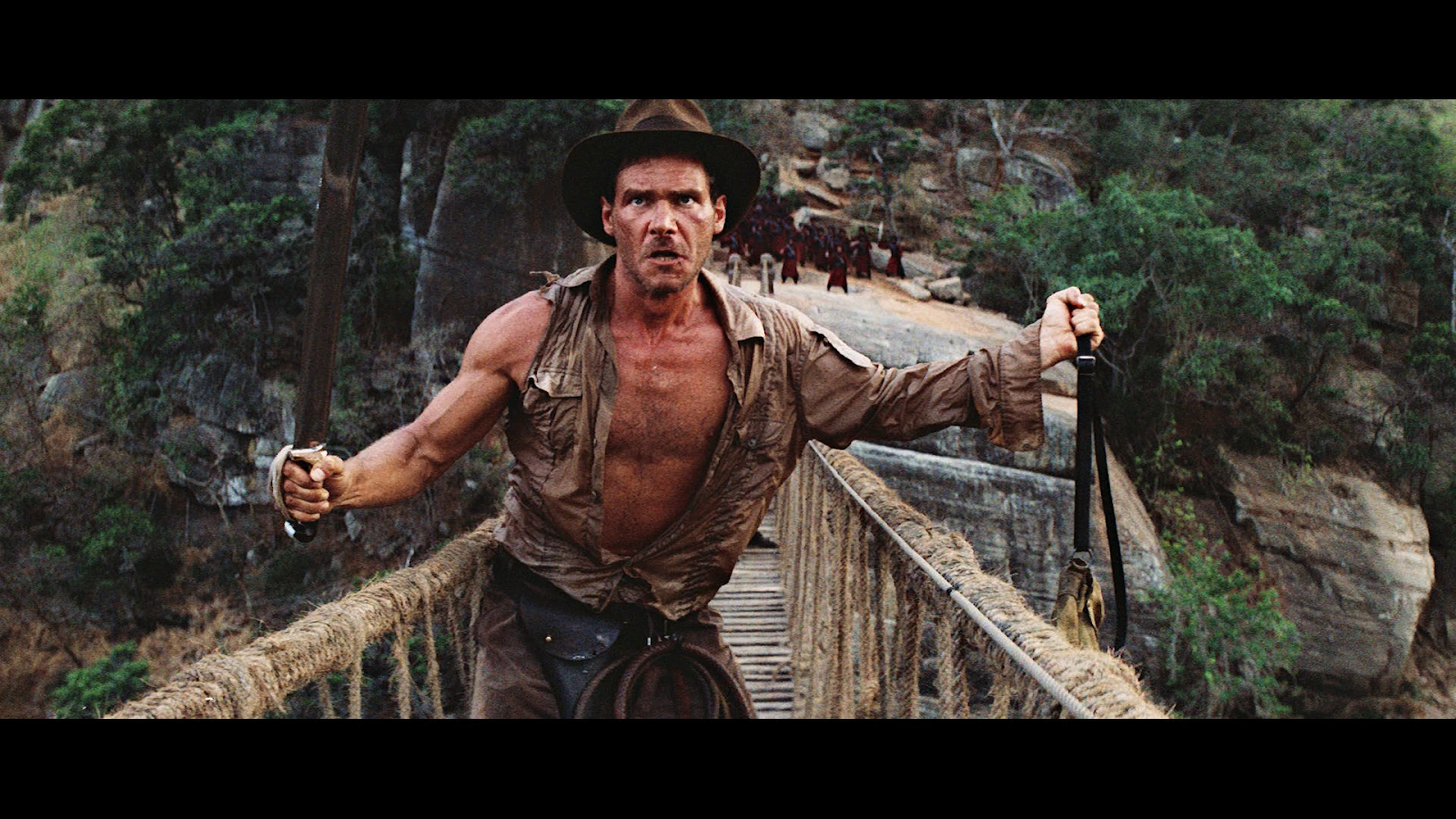* * * *
I just flew back from Lisbon in Portugal. “And, boy, are my arms tired!” But seriously, I did just finish a 160-mile hike on the Portuguese Camino. I flew to Lisbon on August 28 and flew back on September 25, and so technically was gone a full month.
I greatly enjoyed the local Iberian beers, including Mahou, Cruzcampo, Sagres and Super Bock. See Beer in Portugal – Wikipedia, noting the “long history, going as far back as the time of the ancient Roman province of Lusitania, where beer was commonly made and drunk.”
My Utah brother, sister-in-law and I started in Porto, then hiked “back” up to Santiago to Compostela – again. (My brother and I hiked the Camino Frances in 2017, and so came in to Santiago from the east, not the south, like this time.) I wrote about that then-upcoming pilgrimage last August 2d, in St. James – and “my next great pilgrimage.”
In 2017 … my Utah brother and I hiked (and biked) the most popular “Camino,” the French Way… But a month from now – September 2, 2019 – my brother and I will start hiking the 140 or so miles, from Porto “back” up to Santiago. Via the Portuguese Way, and this time we’ll be joined by my Utah sister-in-law.
But first a note. While in Portugal – then Spain – I posted pictures on Facebook. They were pictures I took with the same $50 tablet I used on the Camino Frances in 2017.
But this time I also took a lot of pictures with a Canon camera that was much easier to operate. And on getting home I promptly cut down the number of “Canon” Camino pictures to 591. So I’ll do some future posts featuring pictures from my Canon camera. (Some of which are a lot more spontaneous – interesting – than the tablet.) But getting back to that $50 tablet… (But see the notes on putting those pictures in a post.)
Posting pictures on Facebook with it wasn’t too bad, but writing commentary was a real pain. For one thing I seem to have fat thumbs. For another, the tablet had “autocorrect,” which had a serious problem with foreign names. It kept changing the “de” or “do” in a lot of Portuguese names to “Dr.” Every time. See also another example in an early post from Portugal:
Good morning from Cabo do Mundo. (BTW, autocorrect is having a hissy with these Portuguese names, plus my colloquialisms.) Ready for another 10 mile hike. Slept through the night. “Cozy quarters.”
Which brings up an early-on collection of “estampas.” The photo at right shows the stamps in my credencial as of September 6, four days into the hike. The “cozy quarters” note referred to our first night’s lodging on the hike. (A tiny two-rooms and a kitchen place, where my brother and I shared the “parlor.”)
That came after this post: “First day’s hike is history. West through Porto – with shady spots and sidewalk cafes – and out to the coast. Then north. Made Cabo do Mundo, 10.8 miles. Nothing too sore. Good first hike.”
That last referred to the first day’s hike. Nice thought, but it turned out to be misleading.
I learned it’s not the first day – or even three – of hiking that wears on your feet. It’s the pounding from day after day hiking with a 15-pound pack. And it’s my humble opinion there’s no way to train in advance for that – except to do the same constant hiking at home, day after day. A long hike once or twice a week won’t do it. It’ll help, but you’ll still have to go through the agony of getting your feet accustomed to the constant pounding. Day after day.
Another note. Remember how we used to peel our skin off after a bad sunburn? Back in the old days, when we were young and before today’s fancy-schmancy creams and lotions that prevent such peeling? Something like that happened to the soles of my feet once I got home. By the time we reached Santiago the soles of my feet were like shoe-leather, tough, blister-over-healed-blister and callused. (Or “cayused,” as one cute Farmacia lady said.*)
But then in the week or so since I’ve been home, I’ve peeled off several layers of tough, leathery skin. Apparently the affected parts of the body – like the soles of your feet – also go through a process of “decompressing,” just like you do mentally after such an adventure.
But we’re getting ahead of ourselves. First some notes I made after getting to my hotel in Lisbon.
It came after another red-eye flight, just like the one I made to Tel Aviv and Israel last May. And one thing I learned early on in the trip was that the internet lied about cheap Portuguese taxis. (Bonjour!) Instead of the four-Euro ride to my hotel like I’d been led to believe, it was more like 15 Euros. Which wasn’t that bad, for one ride anyway. But luckily I got hooked up with the Metro.
I took the Red Line from the Aeroporto and got off at Saldanha station. My “Hotel Alif” was right across from Campo Pequeno. It’s a famous bull ring togged out like one of our football stadiums, but with lots of restaurants open on weekdays. (That first day I got yelled at for cutting through one restaurant, getting acquainted with the area. Then the next night I went back for dinner and got served by the same waiter.) Next day – Friday, August 30 – I did some touristy stuff, including a visit to the Padrão dos Descobrimentos (“Monument to the Discoveries”).
It was a lifelong dream. (Or at least since 1979, when I made my first trip to Europe and couldn’t make it to Lisbon.) For a nominal fee I took the elevator to the observation tower, where I met three young ladies from Australia. (I could understand what they were saying, mostly…) Also the Museu de Marinha, a few blocks up from the Monument. (After stopping to enjoy a “Sagres.”)
On Saturday, the 31st, I took a train up to Porto, met up with brother and sister-in-law, and spent a day sightseeing, before heading out. And now for some flavor of that first-day hike:
We hiked west along the Douro River, along the Porto side, then hit the Atlantic Ocean and swung north. It’s the lesser traveled scenic alternative for the Camino Portuguese. Lots of beachside resorts, bathing beauties, and of course some old pot-bellied guys in speedos.
So again, I’ll be doing more posts in the future on this adventure. But in the meantime there are the main themes of this blog. Like the Liturgical year‘s Feast Days. The most recent Feast Day was St. Michael and All Angels, on September 30. For more on that feast day see On “St. Michael and All Angels.” And while I hiked the Camino in September there were two other Feast Days. For more on those and St. Michael see On Holy Cross, Matthew, and Michael – “Archangel.” (Holy Cross Day, 9/1419, and St. Matthew, 9/21/19.)
But in closing, here’s a camera-photo from the first day’s hike out of Porto. I’m always interested in my fellow peregrinos, including how they adjust their packs. Then too, in a future post I’ll include more camera shots of some not-so-typical scenes on the “Coastal” alternative…
[The photo showed two young lady hikers, one adjusting the other’s pack.]
* * * *
I took a bunch of photos for this post, but when I reviewed it in October 2020 – for an upcoming book – the photos were gone. So, I’ve written around them .
Re: “Cayused.” It happened first thing one morning on the hike. We stopped at a Farmacia, as my sister-in-law wanted something like Band-aids for her blisters. She looked at one brand in Portuguese, but the lovely clerk said “those are not for blisters, they are for – how you say? – cayuses.” Which is how the Portuguese pronounce “calluses.” It was very cute, and very memorable…

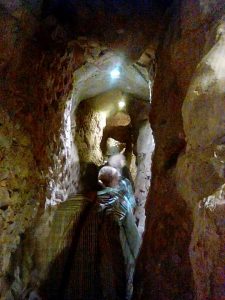

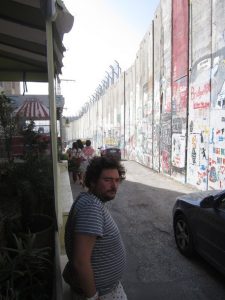
 For more on this James see
For more on this James see 

 After my adventures in Tel Aviv – getting lost hiking to the train station, taking the wrong train (away from the airport) and going 26 hours without sleep – I had to begin preparing for an 1,100 mile road trip up to
After my adventures in Tel Aviv – getting lost hiking to the train station, taking the wrong train (away from the airport) and going 26 hours without sleep – I had to begin preparing for an 1,100 mile road trip up to  Which is another way of saying John the Baptist served as
Which is another way of saying John the Baptist served as  Then
Then 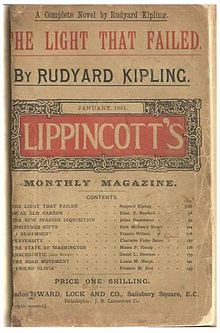 But of course all that was preceded by getting down to work on Thursday. While the main wedding party worked on “favors,” I helped by staying out of the way. (As in “Lead, follow or get the hell out of the way.”) And by reading a first (1908) edition of
But of course all that was preceded by getting down to work on Thursday. While the main wedding party worked on “favors,” I helped by staying out of the way. (As in “Lead, follow or get the hell out of the way.”) And by reading a first (1908) edition of 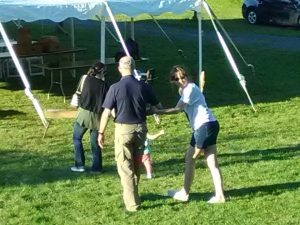
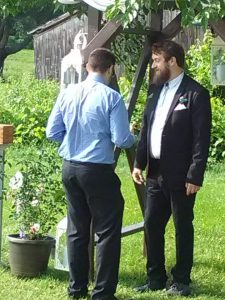 The Wikipedia caption for the Hadley MA image is “Town Hall and First Congregational Church.” The “Officiant getting some last-minute instructions” photo – which I took – is shown at right.
The Wikipedia caption for the Hadley MA image is “Town Hall and First Congregational Church.” The “Officiant getting some last-minute instructions” photo – which I took – is shown at right. 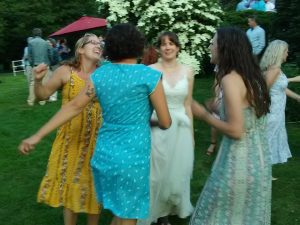 As noted in the opening
As noted in the opening 
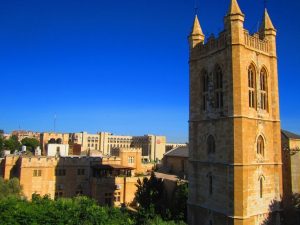
 There was a bit of a problem finding my lodging. (We got there the evening of Saturday, May 11, so I’d had to get lodging for the two nights before the course started, on Monday evening, May 13.) The driver found Al Isfahani Street all right, but had no clue as to the whereabouts of “Herod’s Guest House.” (Near
There was a bit of a problem finding my lodging. (We got there the evening of Saturday, May 11, so I’d had to get lodging for the two nights before the course started, on Monday evening, May 13.) The driver found Al Isfahani Street all right, but had no clue as to the whereabouts of “Herod’s Guest House.” (Near  I wandered around – starting near the Old City and on up Jaffa Street – from 12:30 to 5:15 p.m. local time. Eventually I got over and onto Ha-Neviim Street and west on Jaffa Street, up as far as Sarei Israel Boulevard. (Close to where Herzl comes in to Jaffa.) There I found a liquor store at
I wandered around – starting near the Old City and on up Jaffa Street – from 12:30 to 5:15 p.m. local time. Eventually I got over and onto Ha-Neviim Street and west on Jaffa Street, up as far as Sarei Israel Boulevard. (Close to where Herzl comes in to Jaffa.) There I found a liquor store at  The one at 4:08 in the morning let faithful Muslims know to get up and get something to eat and drink, before the all-day fast. The one around 7:30 p.m. let them know the fast was over – and that they could finally have something to eat and drink.
The one at 4:08 in the morning let faithful Muslims know to get up and get something to eat and drink, before the all-day fast. The one around 7:30 p.m. let them know the fast was over – and that they could finally have something to eat and drink. Re:
Re: 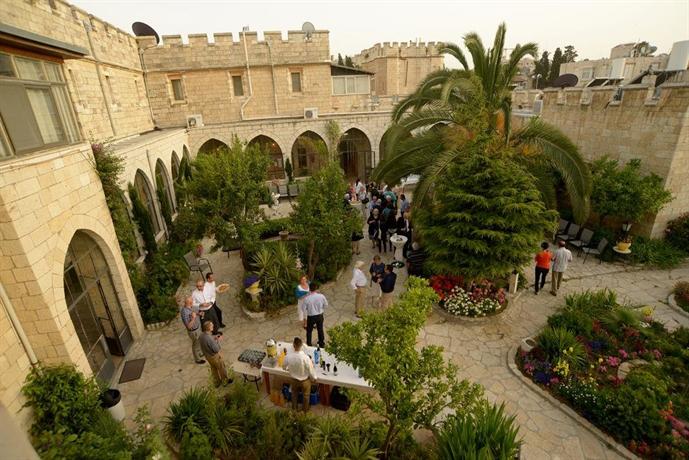
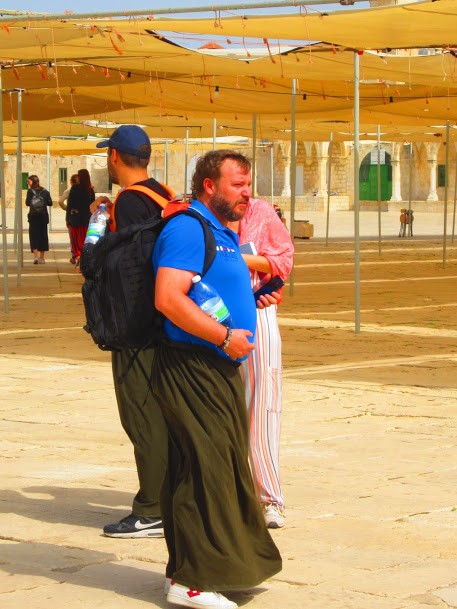 Another side note: Gentlemen who wear shorts – or otherwise show their knees at “many churches and all Muslim areas in the city” – are also given “skirts.” (Like the two dumbasses at left.)
Another side note: Gentlemen who wear shorts – or otherwise show their knees at “many churches and all Muslim areas in the city” – are also given “skirts.” (Like the two dumbasses at left.)
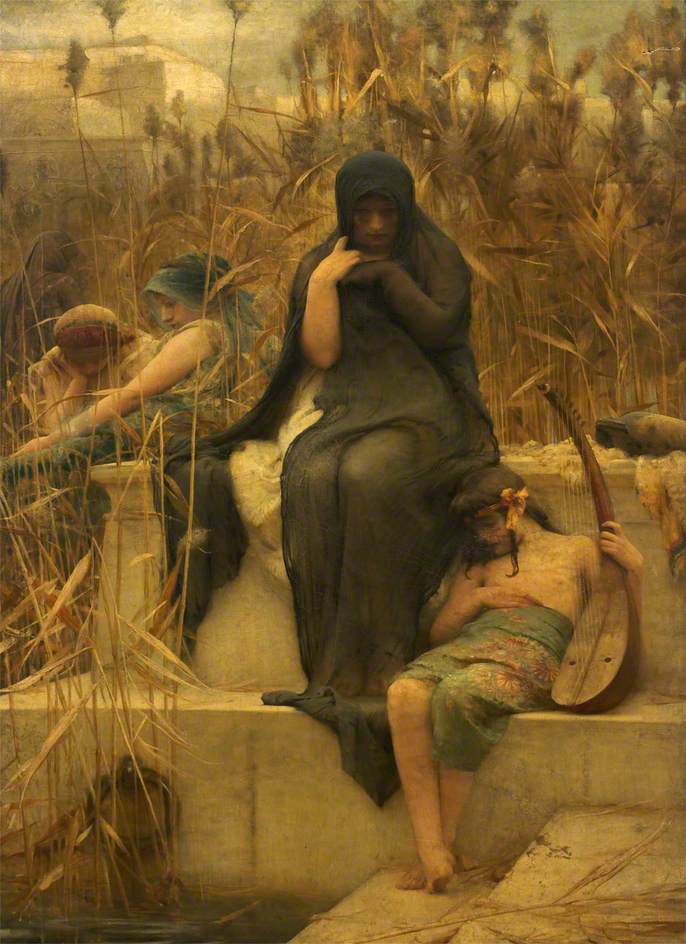
 As noted in
As noted in  That idea was mirrored in
That idea was mirrored in 

 And speaking of
And speaking of  In other words, the man with a
In other words, the man with a  Technically the
Technically the 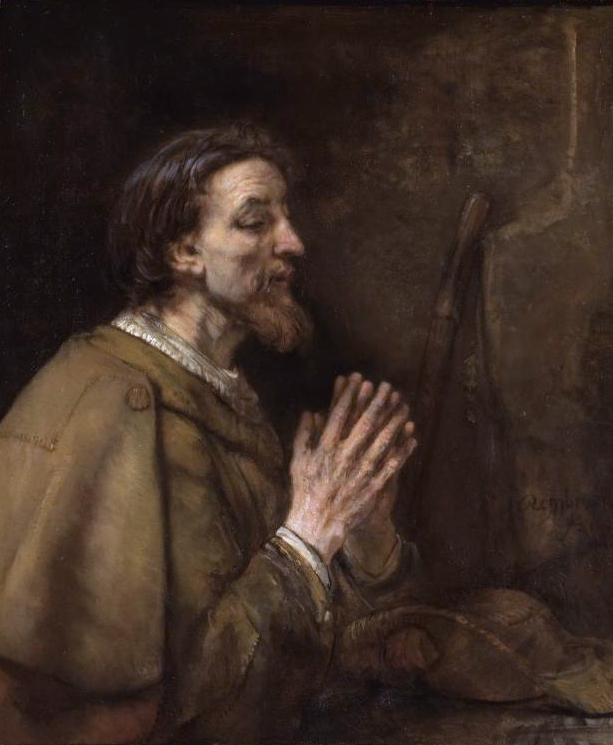
 Re:
Re:  That didn’t work, so in 1992 I added the discipline of daily Bible reading. (See
That didn’t work, so in 1992 I added the discipline of daily Bible reading. (See  Was Moses the first to say “it’s only weird if it doesn’t work
Was Moses the first to say “it’s only weird if it doesn’t work
 The thing is, this business of “helping your team win” has been around a long, long time. (Longer even than “
The thing is, this business of “helping your team win” has been around a long, long time. (Longer even than “
 The other night I watched
The other night I watched 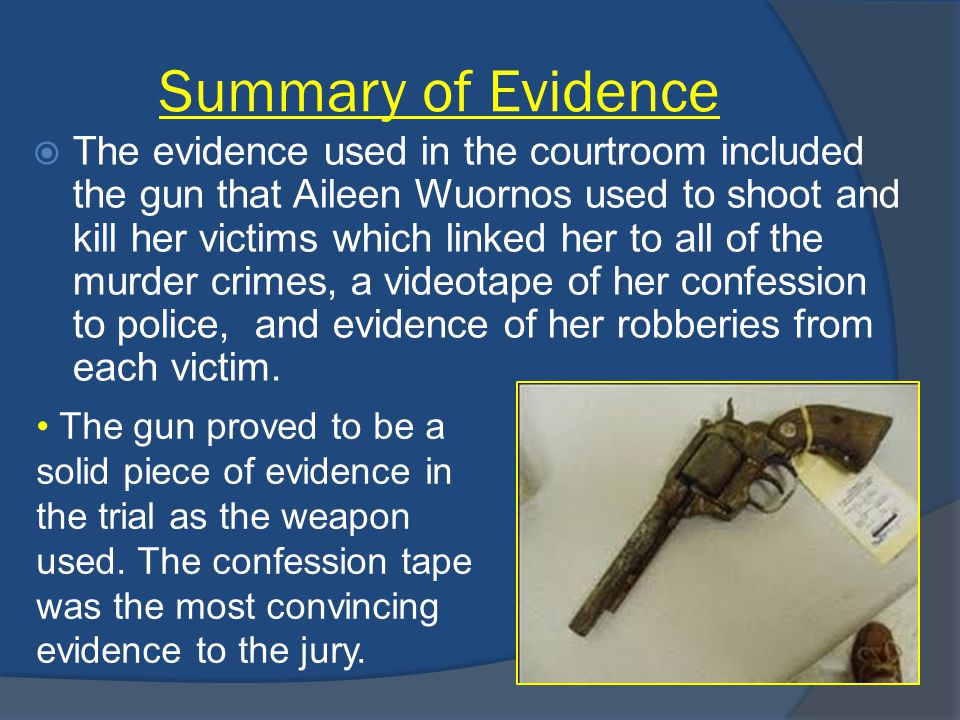 My theory is that you can’t “prove” the Bible-faith by scientific or
My theory is that you can’t “prove” the Bible-faith by scientific or ![Jesus Christ, Public Defender: and Other Meditations on the Bible, For Baby-boomers, âNonesâ and Other Seekers by [Ford, James B.]](https://images-na.ssl-images-amazon.com/images/I/41fojjkSE%2BL.jpg) That’s a thought from my e-book “Jesus Christ, Public Defender.” Near the end of Chapter 8, I wrote about the early years, when I’d just started daily Bible readings and applying them to my own life. (And in particular to my own “obsession,” college football.)
That’s a thought from my e-book “Jesus Christ, Public Defender.” Near the end of Chapter 8, I wrote about the early years, when I’d just started daily Bible readings and applying them to my own life. (And in particular to my own “obsession,” college football.)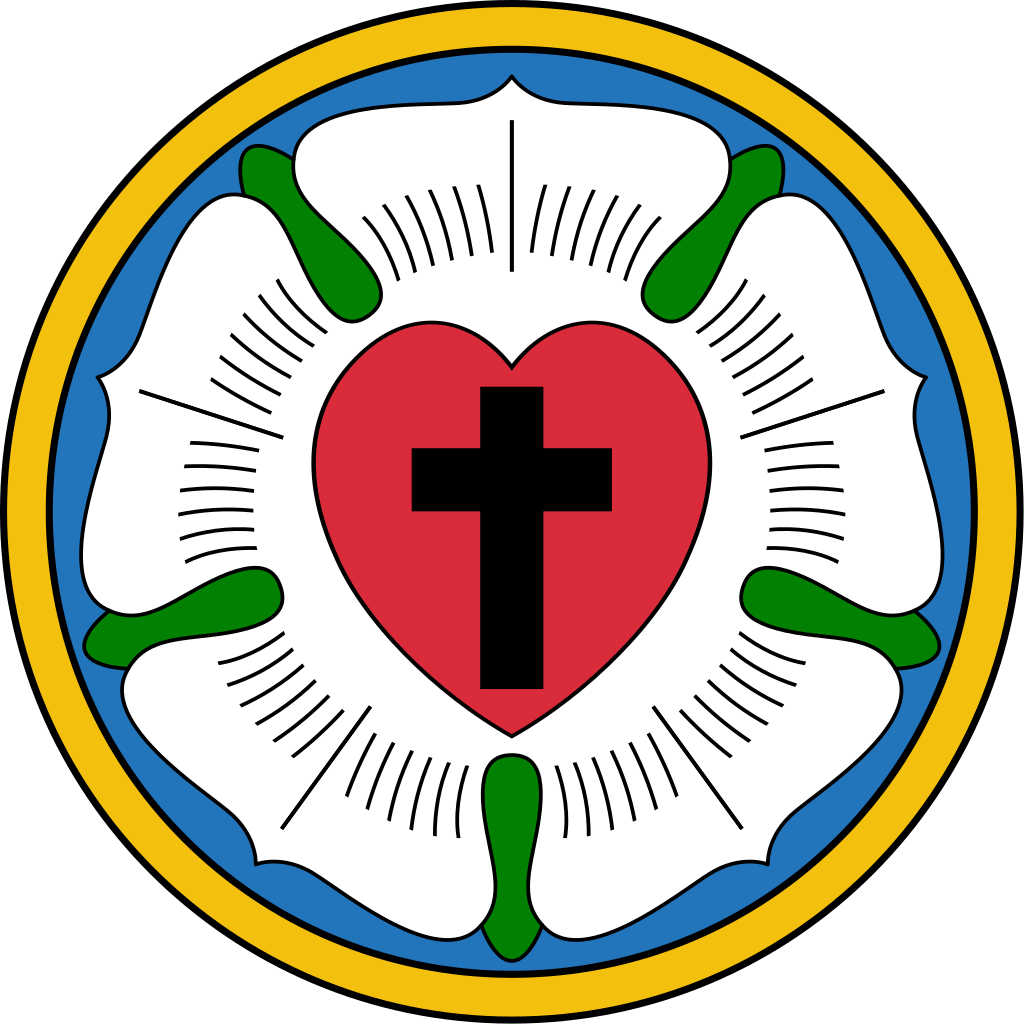 But the big question remains: What are you going to do with that gift? Or in Christian terms, “How are you going to help spread
But the big question remains: What are you going to do with that gift? Or in Christian terms, “How are you going to help spread 